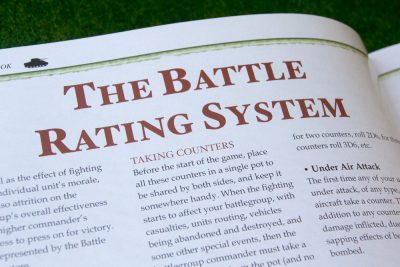By Troy A. Hill
Photos by the Author
This is the first of a series looking at the Battlegroup wargaming rules. This piece originally appeared on WWPD.net and is being reprinted here as part of an ongoing look at the Battlegroup game system.
Battlegroup is The Plastic Soldier Company’s entry into the WWII gaming system. Written by Warwick Kinrade, the rules system is a tight, fairly historical approach to gaming at a variety of force sizes, in either 15mm or 20mm scales.
They have published a core rulebook, and a variety of Theatre of Operations books, including (as of now): Kursk, Barbarosa, Blitzkrieg, Tobruk, Overlord, Bulge (Wacht Am Rhein), Market Garden, and Fall of the Reich.
I’ve had a chance to read the rules and begin some skirmish games at our local gaming club. The rules are different, much different than what I’m used to with other systems. But, they’re not complicated. The biggest challenge I’ve faced has been trying to think inside of the Battlegroup rules, and not applying rules from another game set.
This article will look at the Battlegroup main rulebook, its layout, and how it presents the core of the Battlegroup system. The rules themselves will be covered in later write-ups.
The Rule Book
Battlegroup is published by and is distributed by Plastic Soldier Company (PSC). The rules were written by Warwick Kinrade, with assistance from Piers Brand. The rulebook was originally published as a small paperback book distributed with the Battlegroup Kursk theatre book. It now exists as a hardcover, stand-alone product.

